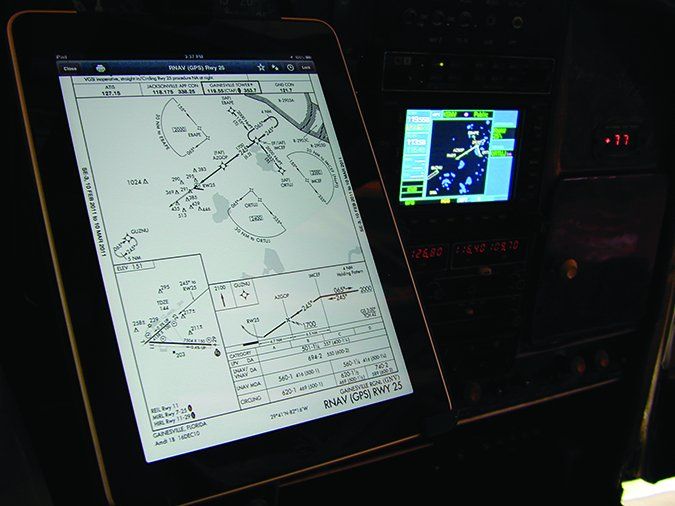Deep down, most pilots would admit they need more practice and instruction than they get. I know there have been lapses in my skills over the years, and as equipment and operating rules change, I have had to spend more time on learning how to use and benefit from them. Like many pilots, I like to train and would do it more often, except for the time and the expense.
In reality, most of us have two training budgets, each with limitations: a financial budget and a time budget. Admitting it’s often difficult to increase allotments to either without significantly and adversely affecting other parts of our lives, how can we get the most benefit from the time and money we do have for flying? How can we realistically assure proficiency on a budget?
Three Factors
First, let’s define what we mean by proficiency: It isn’t a thing so much as it is a state of being. It is the net result of doing several other things. So what factors create a state of proficiency?
The first one is training. In this context, I’ll define training as the process of learning new skills. Flight training usually involves work with an instructor in the air, in a simulator or in a classroom. But learning new skills (training) can also result from flying with other pilots who are not instructors, attending seminars, watching videos or taking online courses. It also can involve talking with other pilots, controllers, mechanics, dispatchers—anyone who has information you can incorporate into your flying. Reading books and magazine articles like this one, which cover aspects of aviation pertinent to the way you fly, also provides training. Another way to think about training is it is the result of learning from the experiences of others.
The second component of proficiency is practice. I’ll define practice as repetition and review of things learned in training, so that we retain and expand upon the skills we’ve learned. Practice gives us our own experiences from which we can learn.
The third factor in proficiency is evaluation. The purpose of evaluation is to confirm we have indeed learned and retained flying skills. Evaluation may be formal, in the form of a practical test or an instrument proficiency check (IPC). It also can be slightly less formal, such as a flight review (which is not an evaluation per se, but which validates the pilot’s retention of skills).
Evaluation can be instructive, as in recurrent training or following a set syllabus to determine skill levels and practicing any tasks in which the pilot is weak or deficient. Evaluation also can be personal—conducting a personal post-flight debrief that honestly assesses your ability to perform tasks to airman certification standards (ACS) criteria. It sounds like a lot. But being a proficient pilot need not entail significant additional time or cost.
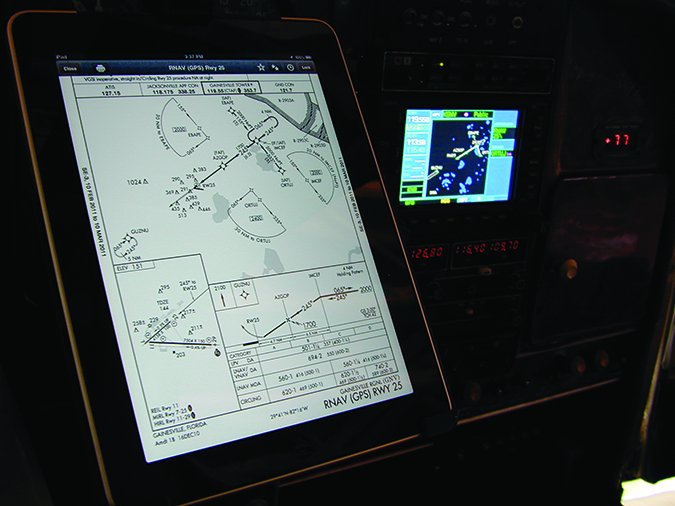
Each Flight A Training Flight
Every time you fly, you have an opportunity to practice the basics. Even when flying with passengers, you can still practice some basic skills, probably without them even noticing. For instance, make a soft-field takeoff, climb precisely at VY to 1000 feet agl, then fly a precise cruise climb speed up to cruising altitude.
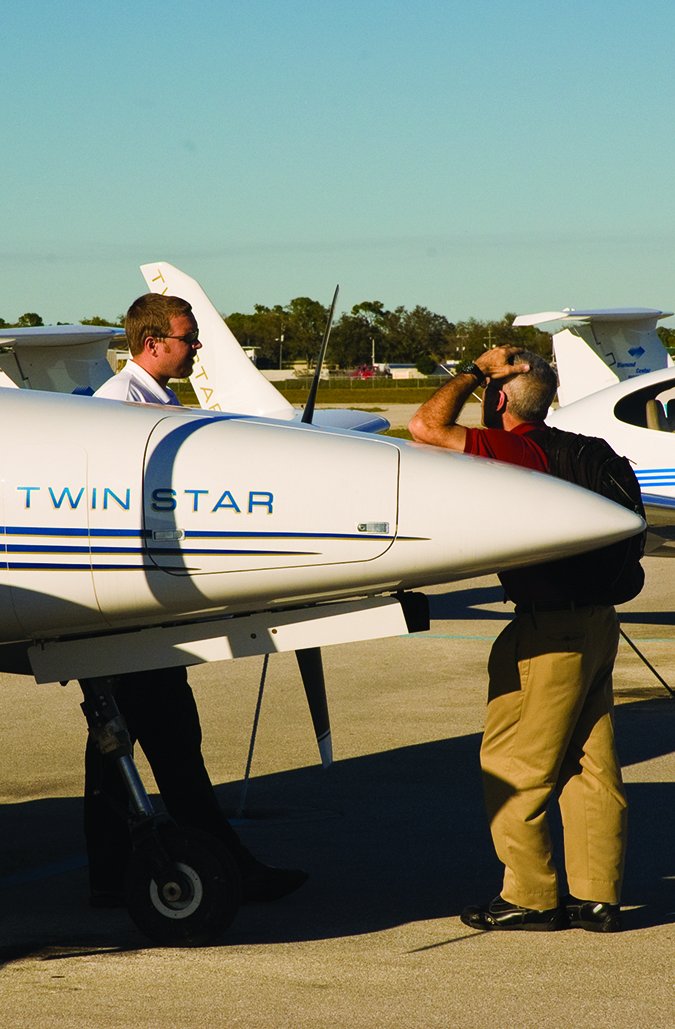
Once you get there, eschew the altitude preselect and hand-fly the transition from climb to cruise—the gradual, but sometimes dramatic change in trim required means you’ll have several minutes of precisely scanning the gauges, controlling the airplane and trimming off the pressures as the airplane accelerates.
Fly an instrument approach you don’t usually use, even in clear skies. Making a visual descent or a VFR arrival? Use the VNAV feature of your GPS to cross two miles from the pattern entry precisely at pattern altitude. Make a short-field, soft-field or (if conditions permit) a no-flap landing. Try some or all of this using backup instruments, in reversionary mode, using your number two radios and displays, or in simulated partial-panel flight.
If you are making a solo trip, or perhaps doing a post-maintenance return-to-service flight after an annual inspection, an oil change or an avionics swap, throw in some slow flight, a stall or two, and/or some S-turns or turns around a point. If you’re “just flying” and not going anywhere, climb to intercept a VOR radial or directly into a holding pattern.
Practice rarely used skills and explore using new ones. You can do all these things during a flight you were going to take anyway, so it costs you nothing in money or time.
When FAA Throws A Curve
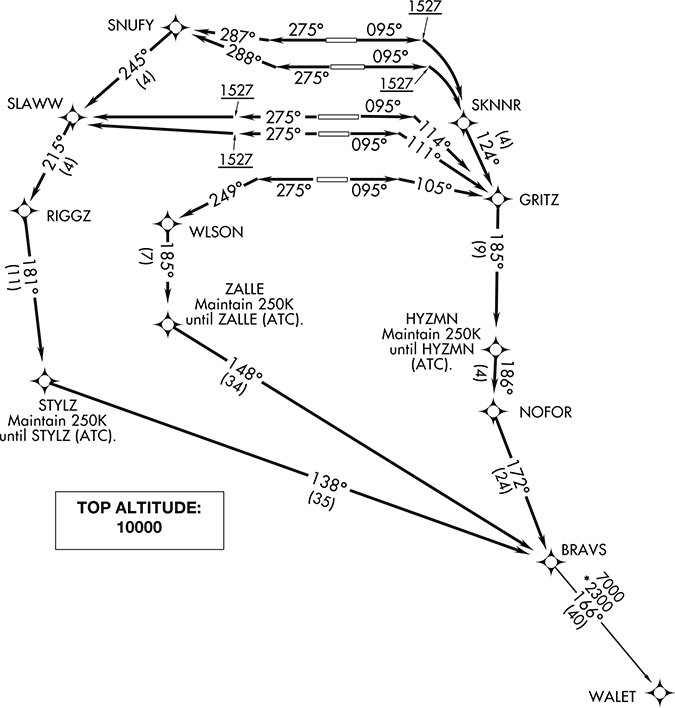
Relatively recent history is full of new equipment and new procedures being introduced, with no regulatory framework mandating or even suggesting CFIs and CFI-Is teach their use. A good example is GPS—if the applicant for a pilot certificate or rating shows up for a checkride with an airplane equipped with GPS, he or she will be required to demonstrate mastery of at least its basic functions. Yet there is no specific mention of checkride-required GPS functions in the practical test/airman certification standards, and there is no advisory circular discussing the specific differences in operating modes from one GPS device to another.
The PTS/ACS are silent about the fact that different weather data uplink displays use different colors to identify the same intensity of radar return, or how to resolve that three or more devices in the same cockpit may display the same radar return in three different colors, which all mean the same thing. See the images on page 10 for an example. They also don’t address signal latency periods or the mosaic versus base reflectivity issue.
Another example is ADS-B, which will be ubiquitous to IFR airplanes and many VFR aircraft in a few years but for which there is precious little how-to guidance and, at least currently, no required training or evaluation on its mastery.
A more immediate example is guidance on “climb via” clearances using published standard instrument departures (SIDs). Pilots and controllers alike are unsure of exactly how to comply with these clearances, if reports from the field are to be believed. There’s nothing about these clearances in the FAA’s instrument training materials or testing standards. Yet all IFR pilots must know how these clearances work, how ATC delivers them to us, and how to properly fly “climb via.”
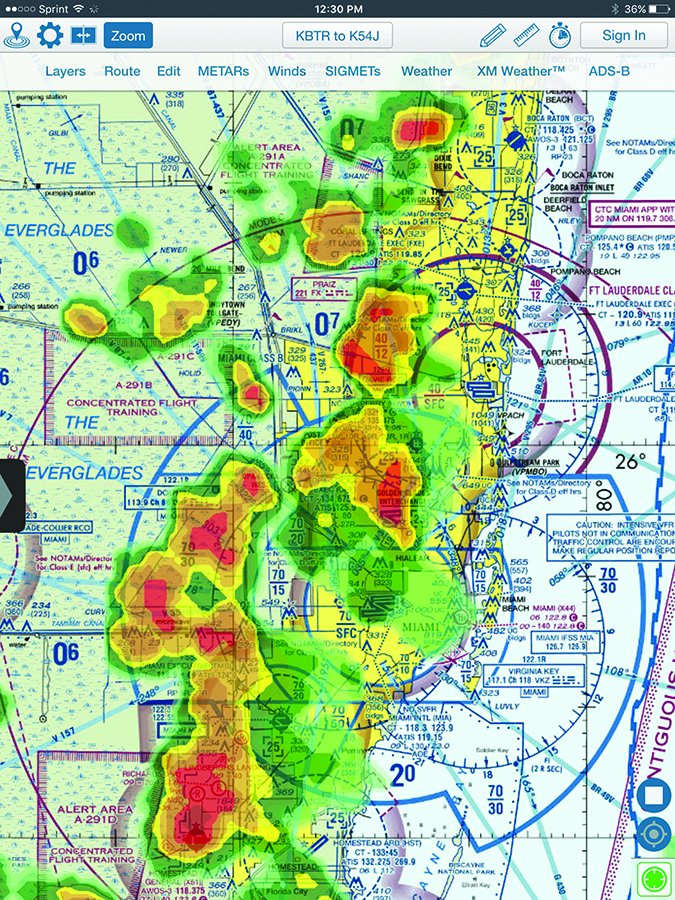
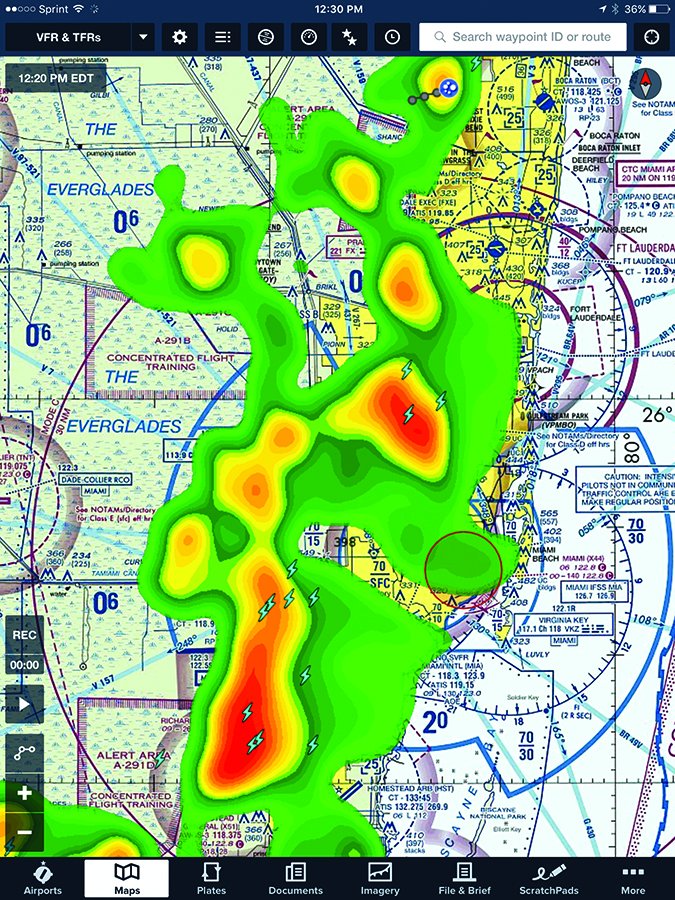
When the FAA throws you a curve with newly approved avionics or flight procedures, we depend on a proactive CFI/CFI-I to teach us about it in our next flight review or IPC. But flight instructors are not always on top of the latest changes either, and you probably don’t have time to wait for your next regularly scheduled review or instrument check before you’re responsible for the new information.
Keeping Up
So how can pilots review the basics, and learn about and incorporate new equipment and procedures?
Instead of waiting for someone to tell you what’s changed, in this technologically fast-paced world it’s up to each of us to stay abreast of the literature. You probably have access to many other aviation magazines, and if your time is at a premium, blow past the fluff pieces about P-51 rides or the latest intercontinental business jet you’ll never fly, and look for the content-rich “how-to” articles on these latest changes, here and in similar publications. Dig through the back issues, because regulatory and equipment changes can be the “flavor of the month” in aviation publications—they’ll all run descriptions and reviews of hardware, software and regulations when they’re new, but then the change is old hat and disappear from the table of contents headlines.
Develop your personal “monthly read file” of serious safety and proficiency periodicals like Aviation Safety and other Belvoir Aviation titles, including IFR magazine, and IFR Refresher. Include membership in the type club for the type of airplane you fly—doctoral thesis research by accident investigator Jeff Edwards reveals a significantly lower rate of accidents among type club members compared to pilots who do not belong to these support organizations. Exposure to critical maintenance and operating information is responsible for this great improvement, according to Edwards.
Other resources can include subscribing to various FAA notification services, which provide an emailed alert when there are new proposed or final regulations, plus advisory circulars and safety-related publications. Visit the FAA’s website for links to changes that have been adopted and will soon become effective. It’s surprising how many new FAA regulations are proposed or adopted every single day, even weekends.
Other free learning opportunities can include the FAA Safety Team (FAASTeam) and FAA WINGS program, plus online training by AOPA, Boldmethod and many more.
Keeping up with Emergency Procedures
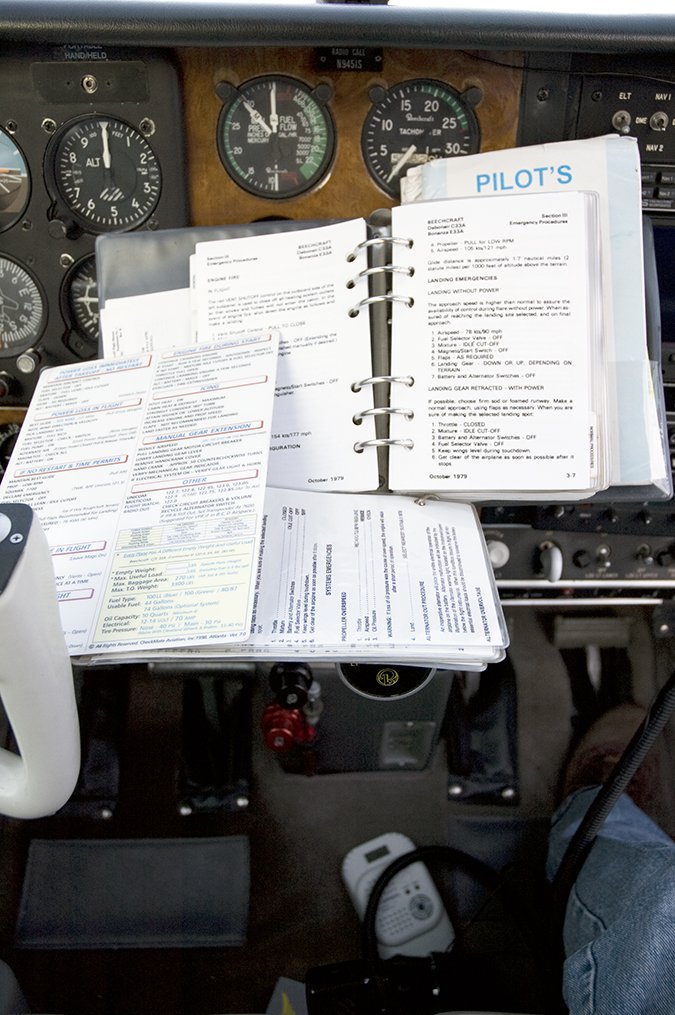
Happily, emergency procedures are something we almost never perform in our day-to-day flying. Unfortunately, this means that unless we put some time into practicing emergency procedures on a regular basis, it will be hard to retain the skills we learned in training. Here’s a quick, easy and cheap way to stay sharp on EPs for the airplane(s) you fly:
With your airplane’s flight manual or pilot’s operating handbook (AFM/POH), turn to the Emergency Procedures section. Look at each checklist and identify the bold print steps—memory items—you must perform by rote before pulling out the checklist. Then grab a stack of 3×5-inch index cards (you remember those, don’t you?). On one side write the name of one procedure: Engine Fire in Flight, Engine Failure in Flight, etc. On the back, write the bold print items. On a regular basis, no less than once a month, belt yourself in the pilot’s seat and pull one of these EP cards randomly from the stack. Read the procedure name and, without looking at the card, perform the memory steps. Use your judgment on whether to move the controls, on the ground or in the air, but definitely touch them. Develop a flow for each checklist.
You can pull out a random EP card in cruising flight or on some schedule. Or put them in your car, and randomly pick a card each time you’re stopped at a light or a railroad crossing. It takes almost no time—and no money at all—to remain very proficient at remembering the critical memory steps of emergency procedures.
Fly Frugally
Even with all those opportunities available, you’ll need to spend some hard-earned cash every now and then. But there’s no reason to break the bank. Seek out low-cost options for recurrent training and required flight reviews. I use a local FBO’s PC-based simulator once a month for $55 per hour, including instructor. My last flight review focused on high angle-of-attack operations and basic stick-and-rudder flying. It cost $150 for 2.5 hours of training, including time in a Piper Cub.
Sometimes you need to pay full price for training in your aircraft or a high-level simulator. But between those training events you can find lower-cost ways to practice and retain proficiency. Include practice of basic skills and maneuvers from your private and/or instrument checkride in your regular flying, and pop-quiz yourself about emergency procedures. You can even get in some practice for your next certificate or rating. Stay on top of the literature, and look for no-cost and low-cost training and evaluation options. It’s not only possible to maintain proficiency on a budget, it can be fun, too, and you may learn more.
Tom Turner is a CFII-MEI who frequently writes and lectures on Aviation Safety.

